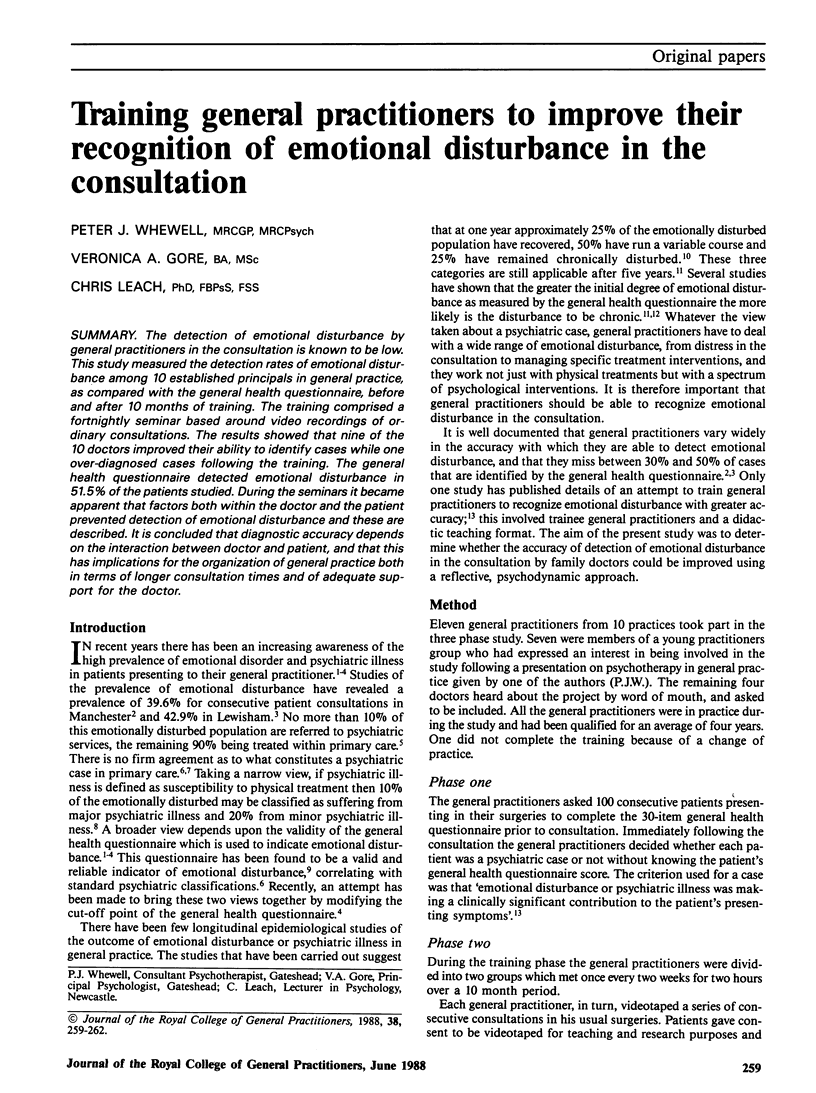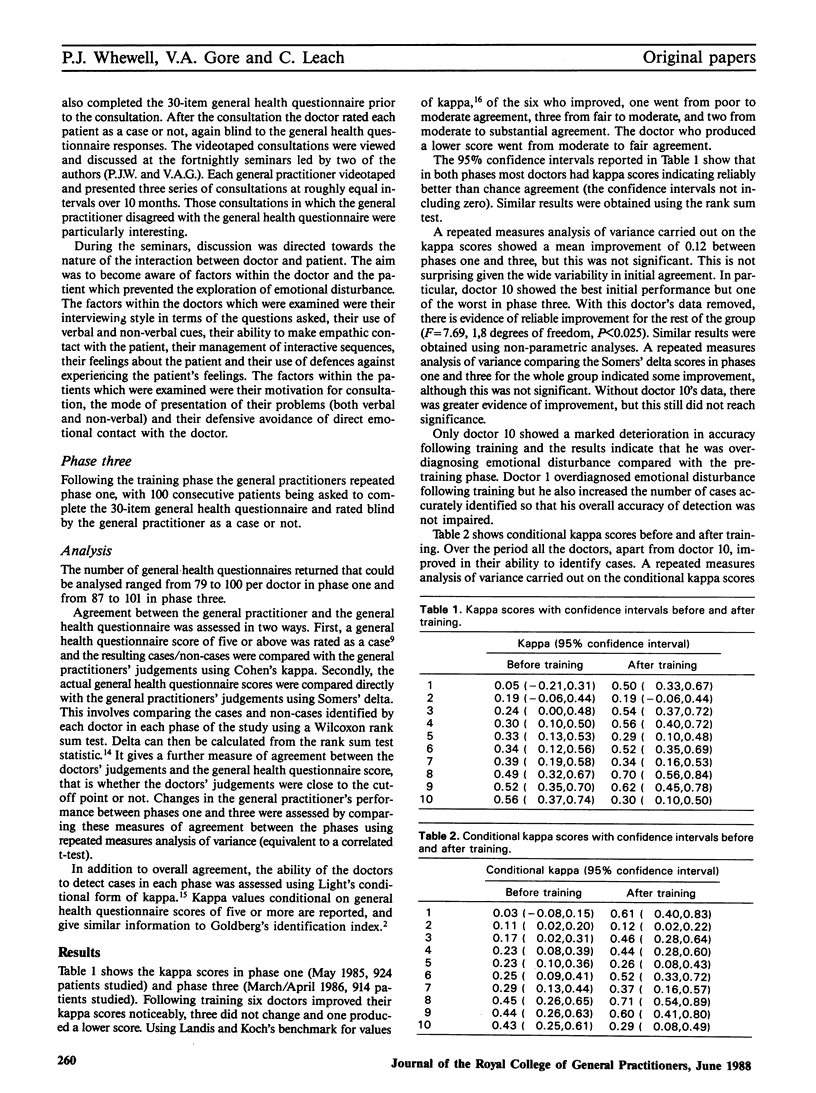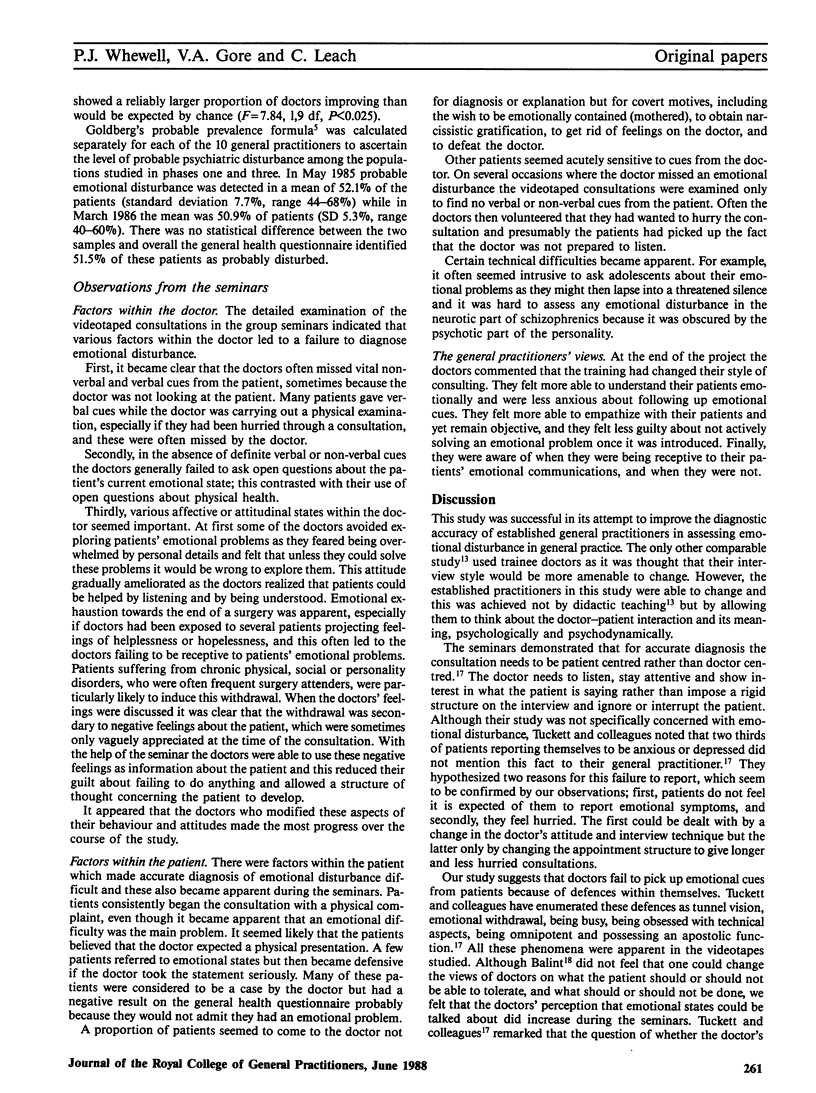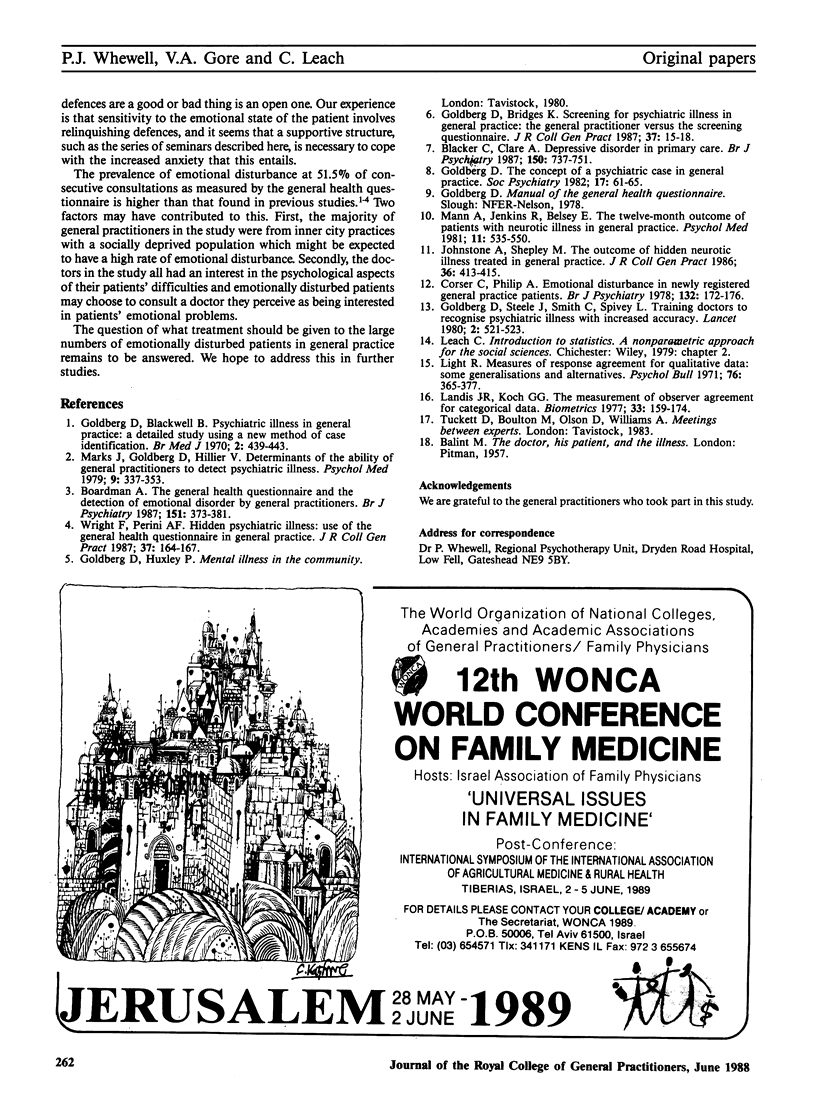Abstract
The detection of emotional disturbance by general practitioners in the consultation is known to be low. This study measured the detection rates of emotional disturbance among 10 established principals in general practice, as compared with the general health questionnaire, before and after 10 months of training. The training comprised a fortnightly seminar based around video recordings of ordinary consultations. The results showed that nine of the 10 doctors improved their ability to identify cases while one over-diagnosed cases following the training. The general health questionnaire detected emotional disturbance in 51.5% of the patients studied. During the seminars it became apparent that factors both within the doctor and the patient prevented detection of emotional disturbance and these are described. It is concluded that diagnostic accuracy depends on the interaction between doctor and patient, and that this has implications for the organization of general practice both in terms of longer consultation times and of adequate support for the doctor.
Full text
PDF



Selected References
These references are in PubMed. This may not be the complete list of references from this article.
- Blacker C. V., Clare A. W. Depressive disorder in primary care. Br J Psychiatry. 1987 Jun;150:737–751. doi: 10.1192/bjp.150.6.737. [DOI] [PubMed] [Google Scholar]
- Boardman A. P. The General Health Questionnaire and the detection of emotional disorder by General Practitioners. A replicated study. Br J Psychiatry. 1987 Sep;151:373–381. doi: 10.1192/bjp.151.3.373. [DOI] [PubMed] [Google Scholar]
- Corser C. M., Philip A. E. Emotional disturbance in newly registered general practice patients. Br J Psychiatry. 1978 Feb;132:172–176. doi: 10.1192/bjp.132.2.172. [DOI] [PubMed] [Google Scholar]
- Goldberg D. P., Blackwell B. Psychiatric illness in general practice. A detailed study using a new method of case identification. Br Med J. 1970 May 23;1(5707):439–443. doi: 10.1136/bmj.2.5707.439. [DOI] [PMC free article] [PubMed] [Google Scholar]
- Goldberg D. P., Steele J. J., Smith C., Spivey L. Training family doctors to recognise psychiatric illness with increased accuracy. Lancet. 1980 Sep 6;2(8193):521–523. doi: 10.1016/s0140-6736(80)91843-7. [DOI] [PubMed] [Google Scholar]
- Goldberg D., Bridges K. Screening for psychiatric illness in general practice: the general practitioner versus the screening questionnaire. J R Coll Gen Pract. 1987 Jan;37(294):15–18. [PMC free article] [PubMed] [Google Scholar]
- Johnstone A., Shepley M. The outcome of hidden neurotic illness treated in general practice. J R Coll Gen Pract. 1986 Sep;36(290):413–415. [PMC free article] [PubMed] [Google Scholar]
- Landis J. R., Koch G. G. The measurement of observer agreement for categorical data. Biometrics. 1977 Mar;33(1):159–174. [PubMed] [Google Scholar]
- Mann A. H., Jenkins R., Belsey E. The twelve-month outcome of patients with neurotic illness in general practice. Psychol Med. 1981 Aug;11(3):535–550. doi: 10.1017/s0033291700052855. [DOI] [PubMed] [Google Scholar]
- Marks J. N., Goldberg D. P., Hillier V. F. Determinants of the ability of general practitioners to detect psychiatric illness. Psychol Med. 1979 May;9(2):337–353. doi: 10.1017/s0033291700030853. [DOI] [PubMed] [Google Scholar]
- Wright A. F., Perini A. F. Hidden psychiatric illness: use of the general health questionnaire in general practice. J R Coll Gen Pract. 1987 Apr;37(297):164–167. [PMC free article] [PubMed] [Google Scholar]


